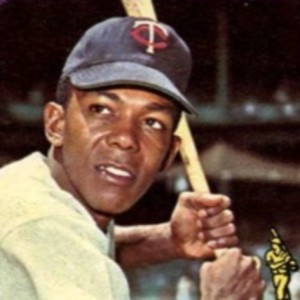Ernest Hemingway and Tony Oliva: A Tale of How They Met in Cuba
This (somewhat) fictional story is a tribute to two men whose love for Cuba and baseball is beyond question: Ernest Hemingway and Tony Oliva. In the summer of 1960, Hemingway was sixty years old and in failing health. He and his fourth wife, Mary, were forced to leave their bucolic estate southeast of Havana. For nearly twenty-two years, the Hemingways had made the Finca Vigía (i.e., ”Lookout Farm”) their home base, but now, under pressure from the U.S. government to leave Cuba, which was becoming more dangerous under the new Communist regime, they vacated their beautiful, fourteen-acre property just outside the little village of San Francisco de Paula. Meanwhile, Oliva was playing baseball for his country team in the Pinar del Río province in western Cuba. This story is part yarn, part fantasy and part truth. It is left to the reader to decide which parts are true and which are fiction.
Episodes

Tuesday May 03, 2022
Tuesday May 03, 2022
This (somewhat) fictional story is a tribute to two men whose love for Cuba and baseball is beyond question: Ernest Hemingway and Tony Oliva. In the summer of 1960, Hemingway was sixty years old and in failing health. He and his fourth wife, Mary, were forced to leave their bucolic estate southeast of Havana. For nearly twenty-two years, the Hemingways had made the Finca Vigía (i.e., ”Lookout Farm”) their home base, but now, under pressure from the U.S. government to leave Cuba, which was becoming more dangerous under the new Communist regime, they vacated their beautiful, fourteen-acre property just outside the little village of San Francisco de Paula. Meanwhile, Oliva was playing baseball for his district team in the Pinar del Río province in western Cuba. This story is part yarn, part fantasy and part truth. It is left to the listener and the reader to decide which parts are true and which are fiction.

Ernest Hemingway and Tony Oliva
Ernest Hemingway loved to tell stories. Hemingway biographer Carlos Baker called these stories “yarns.” His good friend, Aaron Hotchner, called them “practical joke fantasies.” Like all good storytellers, Hemingway exaggerated. Often, though, such talk gave him inspiration, and sometimes found its way into his writing.
Tony Oliva tells a few good stories, too, but his greatest story wasn’t a joking matter, nor one that he has shared, to this day, with anyone but his closest family members. The most plausible story is the one recounted by Oliva’s biographer, Thom Henninger. in Tony Oliva: The Life and Times of a Minnesota Twins Legend (2015). In order for likeable young Oliva to have a realistic chance of being signed to a long-term contract by the Twins, he needed legal documentation showing an age approaching twenty. The Minnesota Twins weren’t interested in older prospects—if a prospect were over twenty, the Twins would likely pass. Oliva, though, was actually approaching his twenty-third birthday, an age that would most likely be out of the ballpark for Twins owner Calvin Griffith. Papa Joe Cambria, a scout for the Twins, believed in Oliva, though. The young man could hit almost any pitch in and out of the strike zone, and he could drive the ball to every nook and cranny in the stadium. If the Twins saw what he saw, Cambria knew that Oliva was major league material.
How did Cambria make the Twins believe that Oliva was three years younger? No one really knows except for Tony and his family, but one thing is for certain: he needed help. Such aid, I suggest in this story, could have come from another Cuban Papa: they called him Papa Hemingway.
Soon, the entire story will be available as an e-book on Amazon. If you want to learn a bit more about me--a lifetime fan of the Minnesota Twins and of Hemingway's stories--then visit http://curtdeberg.com.


